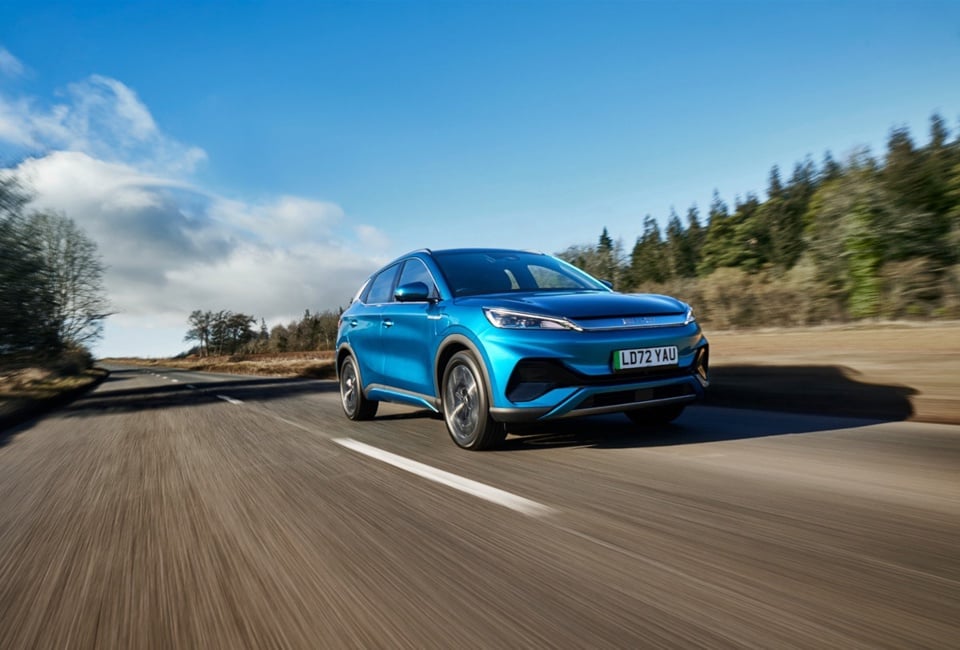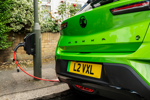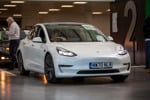Two Chinese electric cars, one from BYD and another from ORA, have achieved Green NCAP’s top scores after subjecting the cars to Europe’s most comprehensive series of environmental performance-based laboratory and road testing.
Green NCAP also released new results for vehicles with diesel and petrol powertrains produced by Mercedes-Benz, Audi, Škoda, and Dacia – showing that progress is still possible and can be delivered in more traditional engine technology.
The results – measurements that include regulated and non-regulated parameters – are ranked on three important indexes: clean air, energy efficiency and greenhouse gas. For easy comparison between vehicles, scores range from 0 to 10, the higher being the better score.
“Some of the vehicles tested clearly demonstrate the achievements made by industry in the quest for cleaner and less climate damaging cars, even if still powered with conventional engines,” said Dr Aleksandar Damyanov, Green NCAP technical manager
“With results like that, upcoming Euro 7 regulation should not be a big challenge for the manufacturers of today’s best performers. And the high scores of the five-star Chinese newcomers show they are ready to compete for market share.”
In Green NCAP tests, the car's low energy usage in cold weather conditions Chinese BYD’s ATTO 3, a compact SUV with a maximum power of 150 kW and a battery capacity of 60 kWh stood out.
Green NCAP said this was due to its well-designed heating system which uses a heat-pump and a range of different sources of waste heat to provide the right level of cabin comfort.
The vehicle's grid-to-battery output efficiency of 87%, on the other hand, was judged average and might have been greater with optimised charger and battery charging/discharging behaviour.
“Overall, the BYD ATTO 3 remains an excellent choice of electric car, achieving an average score of 97% and 5 Green Stars,” it said.
Chinese manufacturer Great Wall Motors’ ORA Funky Cat delivered a similarly robust result in the Green NCAP tests.
The compact family vehicle with a full-electric drivetrain, a maximum power of 126 kW, and a battery capacity of 63 kWh, ranked highly with its grid-to-battery output an impressive 93.2%, a number not previously recorded in Green NCAP testing.
This enabled the car to lower its overall consumption values and hence, with an average score of 97%, the ORA Funky Cat comfortably achieved 5 Green Stars as well.
Green NCAP noted that there are more environmental performance innovations in the market than battery-electrification.
The Mercedes-Benz E300d 4MATIC estate, which comes equipped with a two-litre diesel engine - given its weight and size - takes advantage of the efficiency of its diesel powertrain, which is supported by a 48 V mild-hybrid system, although the high greenhouse gas emissions are not enough for a result better than 1.9 out of 10.
“Yet the greatest achievement of Mercedes’ engineers is visible in the Clean Air Index: with a result of 9.3 out of 10, the diesel E-Class becomes the least polluting combustion car Green NCAP has tested so far,” Green NCAP said, according the car an average score of 50% and 3 Green Stars.
The Audi A6 50 TDI quattro - a full-size executive limousine – was tested with a three-litre turbocharged diesel engine, providing 210 kW peak power also scored well.
Green NCA noted that using fossil-fuel has limited potential for minimizing greenhouse gas emissions. However, the Audi’s diesel powertrain is more efficient than its petrol counterpart although its high mass of two tonnes makes it more difficult to keep consumption and CO2 emissions low.
Green NCAP said the car’s performance in the Clean Air Index is however impressive, demonstrating unusually low particle emissions and excellent control of other pollutants overall.
“Unfortunately, its emissions rise significantly over Green NCAP gross exceedance thresholds under highway conditions. Overall, the 50 TDI quattro scores an average score of 37% and 2 Green Stars.”
The Škoda Kamiq - a compact SUV with a one-litre turbocharged petrol engine - qualified for additional robustness testing under more challenging conditions due to its overall good scores.
“The energy efficiency index of 5.2 is well-deserved, but additional electric support might further improve the consumption figures and corresponding CO2 emissions,” it said.
The Kamiq scores 3.8 out of maximum 10 in the Greenhouse Gas Index. Overall, the Škoda finished Green NCAP’s tests with an average score of 53% and collected 3 Green Stars.
The 2023 model of the Dacia Jogger Hybrid - equipped with a 1.6 litre naturally aspirated petrol engine, electric traction motor and automatic transmission - also delivered creditable fuel consumption values – a figure of 4.6 l/100 km is usual for a combined real-world trip.
The car scored slightly above average in the Clean Air Index, where results could be improved by better particle and CO control and more robust performance in cold weather conditions.
“A good overall performer, the Jogger receives an average score of 51% and collects 3 Green stars,” it said.















Login to comment
Comments
No comments have been made yet.